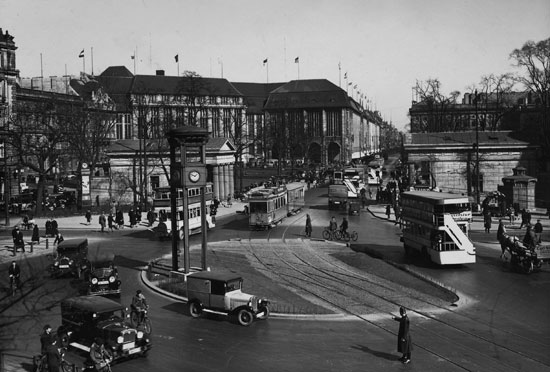Fr : version française / En: english version
Everything's connected!
With the invention of the bicycle, the power of the internal combustion engine and the ability to harness the wonders of electricity, modern European cities enjoyed a plethora of public and private transportation options. Streets had to adapt to ensure these different methods of transportation could share the available space effectively.
The street became a stage for this mechanical choreography, decorated and lit by signposts, with the traffic police conducting the overall performance.
The drive to ensure fluidity and safety, coupled with the need to share the public thoroughfare, gradually led to streets being split into different sections.



























